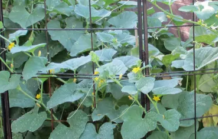Many parts of Kansas will have a peach and apricot crop that wasn’t badly hurt by late frosts. To take advantage of this good fortune certain things should be done as the fruit matures to ensure a good harvest.
Control insects and diseases: Though it is too late to control peach leaf curl (see http://www.hfrr.ksu.edu/
Spray every 10 to 14 days. Pay attention to the waiting period between the last spray and harvest. See the publication, “Fruit Pest Control for Home Gardens” at http://www.ksre.ksu.edu/
Thin peaches: Thin peaches to 1 every 6 to 8 inches to maximize fruit size and to decrease the load on the branches. As a general rule, we need about 40 leaves per peach for maximum quality. Peaches are borne in clusters, so calculate how many a branch can support by dividing the length of the branch in inches by 7. As long as there is an average of 7 inches of branch length per peach, it doesn’t matter whether the peaches are in clusters or not.
Water Trees as Needed: The most critical time for adequate water is during the pit hardening stage which usually lasts between 2 to 4 weeks. Cut open a few peaches to determine when the pit starts to harden or become woody. Irregular watering during this period can lead to split peaches.
Prop up branches if needed: Prop up branches if the fruit load is so heavy the tree may break apart. Use boards with a “V” cut in one end to support the branch. Prune the branch back to a smaller side branch next spring (March). (Ward Upham)




